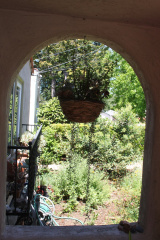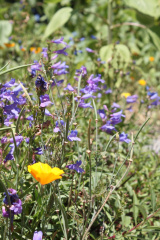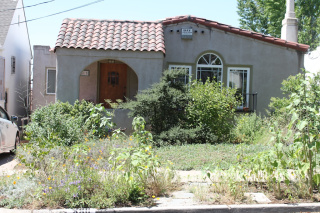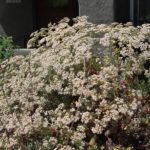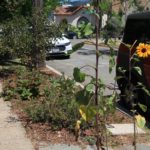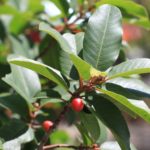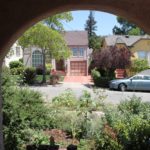Lot size: 600 sq. ft. front garden, 180 sq. ft. parking strip, 100% native
Garden Age: Garden was installed in 2009
Years on the Bringing Back the Natives Garden Tour:
Showcase Feature
In a previous drought, unhappy with the amount of water it took to keep her crabgrass lawn green, Sandy just quit watering. Then, in 2009, tired of that brown-lawn look she sheet mulched, doing the lawn in altogether. “Sheet mulching is absolutely the best way to get rid of lawns! It’s easy, and it works,” says this happy homeowner. In spring this small garden contains a potpourri of flowering plants: yellow gumplant, purple penstemons, orange monkeyflower and poppies, red hummingbird sage, and pink clarkia.
Other Garden Attractions
- California lilac, toyon, currant, and coffeeberry create privacy screens and soften the lines of the house.
- The fragrant and drought-tolerant Sonoma sage functions as a ground cover.
- Sandy waters the garden twice a month in the summer and fall.
Gardening for Wildlife
Butterflies appreciate the diversity of nectar plants in this garden. Monarchs are attracted to the milkweed. Hummingbirds are drawn to the hummingbird sage and penstemon. Native bees adore the buckwheat and poppies, and moths are attracted to the delicate white blossoms of the soaproot, which open in the late afternoon and early evening. Crickets, having found a home here, chirp cheerily in the evenings.
Bob, the cat, is kept indoors, both to protect birds, and to keep him safe, as his predecessor was killed by a coyote.
Keystone species in this garden (watch this talk by Doug Tallamy!)
Keystone species—our own, local ecological powerhouse plants— in this garden include California lilac, manzanita, sage, buckwheat, and redbud.
Garden Talks
12:00 and 3:00 “How to sheet mulch your lawn away” by Sandy Jaeger


